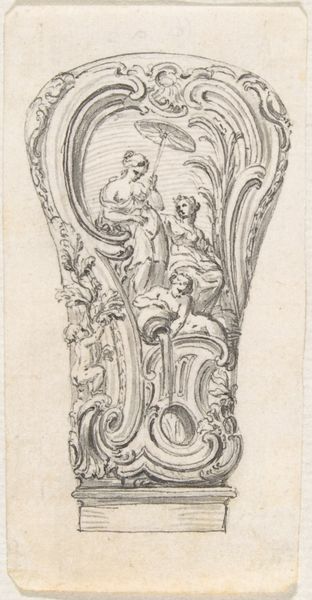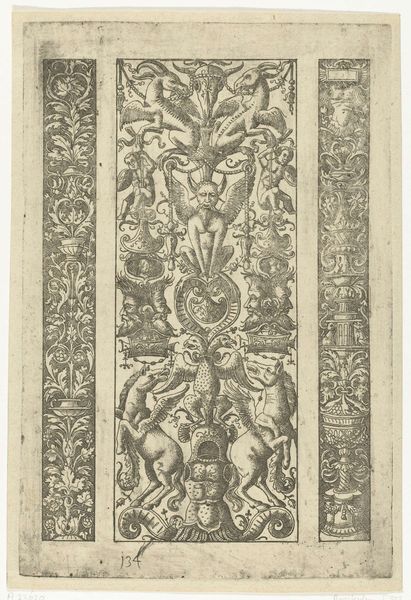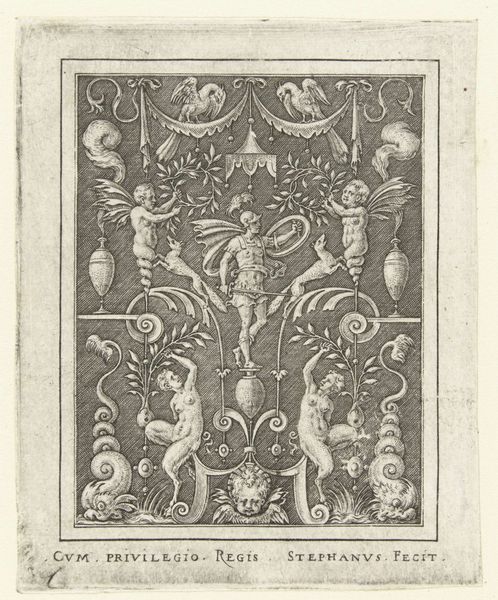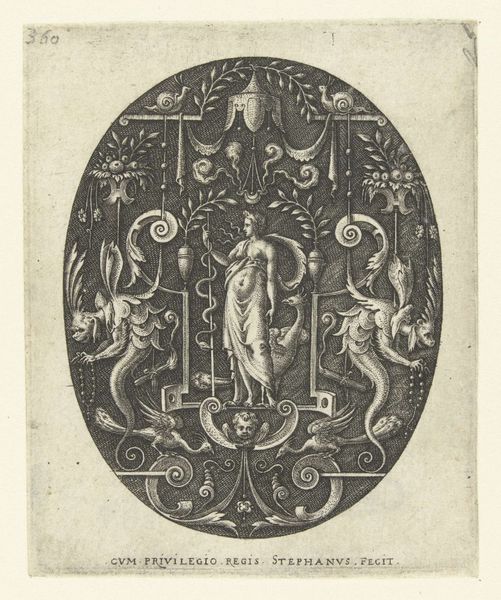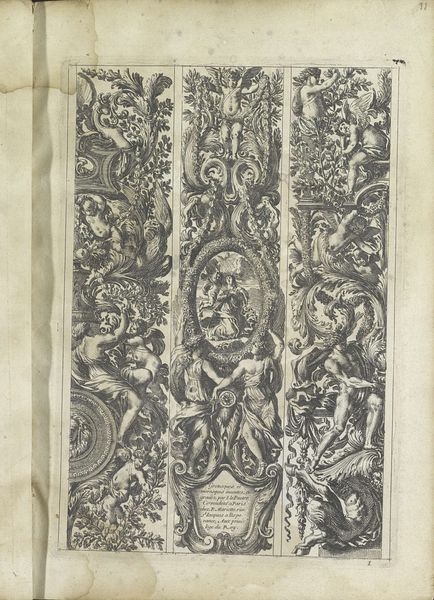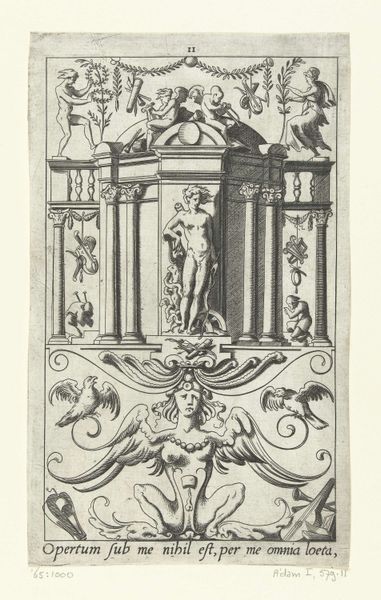
drawing, print, engraving
#
drawing
#
baroque
# print
#
figuration
#
history-painting
#
engraving
Dimensions: height 230 mm, width 75 mm
Copyright: Rijks Museum: Open Domain
Curator: Let's discuss this striking 1657 engraving, "Paneel met twee engelen die schild vasthouden", which translates to "Panel with two angels holding a shield," attributed to Jean Lepautre and currently held at the Rijksmuseum. Editor: My initial response is drawn to its elegant and ornamental features, showcasing dynamic figures within a structured frame. It appears as a highly stylized design, perfectly capturing the Baroque spirit. Curator: Indeed. Consider how Lepautre, through figuration, evokes classical imagery in service of the aristocracy. Notice the central figures - angelic forms engaged in holding what appears to be an empty shield. Their bodies convey dynamic movement and seem suspended as though frozen mid-dance. This gesture is inherently tied to the allegorical language used for power in that period. Editor: The meticulous detailing highlights the artist's mastery. The use of line—particularly its density and variation—defines form, creates shadow, and imbues texture, generating depth. I'm particularly interested in how Lepautre’s controlled mark-making renders those billowing garments with such finesse. Curator: Observe how the imagery and ornamental excess serves more than surface decoration. The image hints at ideals tied with the era. The female figure prominently featured among winged cherubs draws upon our subconscious association and memories with the figure, to underscore narratives related to triumph, nobility, and legitimacy. It could represent an almost psychological need by institutions of power to claim authority, in that time period. Editor: Precisely. But looking at this work from the point of view of art’s composition, the symmetry that anchors it, allows the gaze to flow and remain centered within the panel, without drifting towards the edges. Curator: Looking deeper, the very act of displaying emblems of power suggests not just confidence, but perhaps also anxiety about social stability. The Baroque embraced such dramatic imagery, because society yearned for order. Editor: I find it interesting how this carefully crafted arrangement reflects cultural anxieties, expressed through highly decorative design. Curator: So, while seemingly an image glorifying nobility, it implicitly acknowledges its vulnerability and the psychological hold such displays needed to exert. Editor: Analyzing Lepautre's panel reveals his meticulous artistry and how structure supports narrative, shaping cultural ideals into tangible forms.
Comments
No comments
Be the first to comment and join the conversation on the ultimate creative platform.

